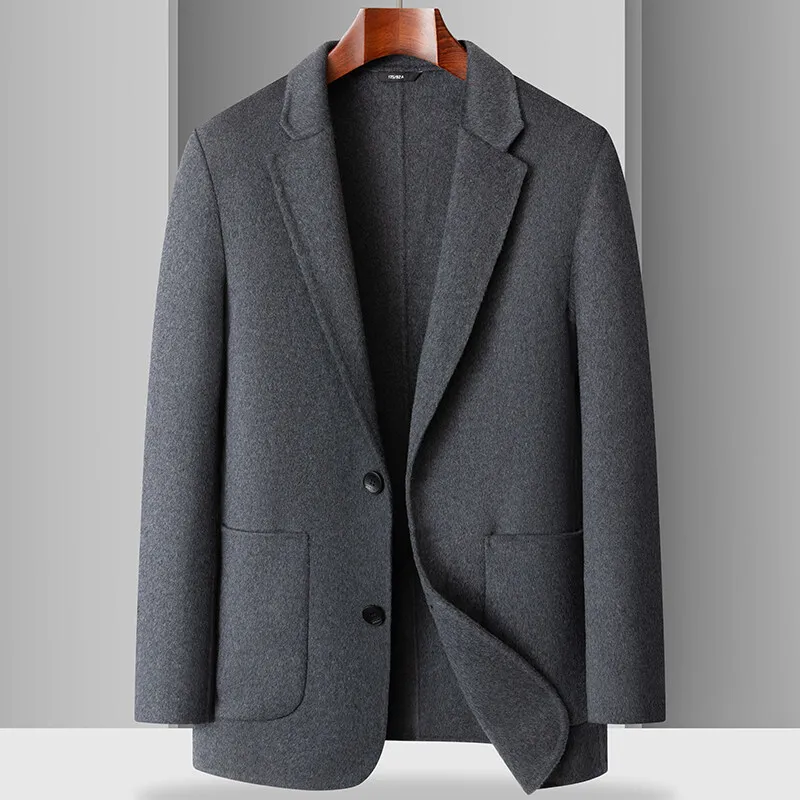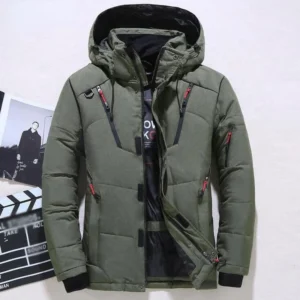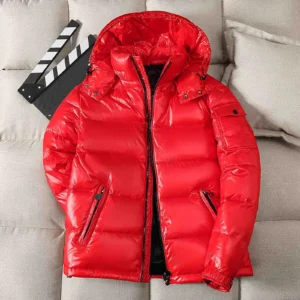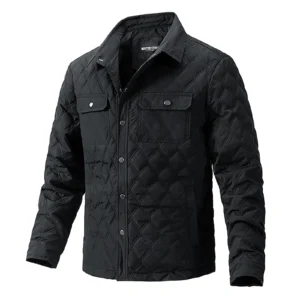The Science Behind Coat Warmth Ratings
When temperatures drop, finding the right winter coat becomes essential for comfort and safety. But what exactly do those warmth ratings mean on coat labels? Understanding coat warmth ratings is more complex than simply looking at a number.
Coat warmth ratings are systems developed by manufacturers to indicate how effectively their outerwear insulates against cold temperatures. These ratings help consumers compare different options and find the right coat for their needs. However, it’s important to recognize that these ratings aren’t universal standards—they vary between brands and are determined through different testing methods.
Manufacturers typically develop these ratings through laboratory testing using thermal manikins in controlled environments. These tests measure how effectively a coat retains heat and resists cold air penetration. However, perceived warmth is highly subjective and varies based on numerous factors beyond the coat itself.
While these ratings provide valuable guidance, they shouldn’t be treated as absolute guarantees. Your personal experience with a coat may differ based on your activity level, metabolism, and local weather conditions. Choosing the right coat length also significantly impacts overall warmth and protection, as proper coverage is essential for trapping body heat effectively.
This guide will walk you through the key metrics used to measure coat warmth, different insulation types, hidden factors affecting warmth, and practical advice for selecting the perfect coat for your needs.
Essential Warmth Metrics Explained
Understanding the technical specifications behind coat warmth helps you make informed decisions when shopping for winter outerwear. Here are the key metrics that determine how warm a coat will keep you:
Temperature Ratings
Many brands provide approximate temperature ranges to indicate when a coat will keep you comfortable. These ratings typically include:
– Comfort ratings (the temperature at which the average wearer remains comfortable)
– Lower limit ratings (the temperature at which the coat provides basic protection)
– Extreme ratings (the temperature at which the coat prevents hypothermia for a limited time)
Remember that these ratings assume you’re wearing appropriate base and mid-layers. They’re most useful when comparing coats within the same brand rather than across different manufacturers.
Fill Power
Fill power measures the quality and loft of down insulation—specifically, how many cubic inches one ounce of down fills when allowed to reach its maximum loft. Higher numbers indicate better insulation:
– 550-650: Good quality, entry-level down
– 700-800: High-quality down offering excellent warmth-to-weight ratio
– 800-900: Premium down providing exceptional insulation with minimal weight
A higher fill power means the down traps more air (which provides insulation) while weighing less, creating a warmer yet lighter coat.
Fill Weight
While fill power measures quality, fill weight tells you the total amount of insulation in the coat. A coat with 6 ounces of 700 fill-power down might provide similar warmth to one with 8 ounces of 550 fill-power down, but the higher fill-power coat will be lighter and more compressible.
For example:
– Light jacket: 2-3 oz of down
– Medium-weight coat: 4-6 oz of down
– Heavy winter coat: 7+ oz of down
CLO Value
CLO is a scientific unit measuring thermal insulation of clothing. One CLO equals the insulation needed to maintain comfort for a resting person in a 70°F room with 50% humidity and minimal air movement. While consumers rarely see CLO values directly, they form the foundation for many brand-specific rating systems.
Understanding these metrics helps you look beyond marketing claims and assess the true warmth potential of a coat. For a deeper understanding of how different materials affect warmth retention, exploring various insulation types and their warmth properties can provide valuable insights for your purchase decision.
Down Insulation: Nature’s Premier Insulator
Down insulation represents the gold standard in natural insulation materials, prized for its exceptional warmth-to-weight ratio. This remarkable material consists of the soft, fluffy clusters that form the undercoating of waterfowl, primarily ducks and geese.
What Makes Down Special
Down isn’t actually feathers—it’s the three-dimensional clusters that grow beneath the feathers. Each cluster has thousands of tiny fibers that trap air and create exceptional insulation. The structure of down creates millions of tiny air pockets that capture body heat while allowing moisture vapor to escape.
Advantages of Down Insulation:
– Unmatched warmth-to-weight ratio
– Highly compressible, making it ideal for packable coats
– Exceptional durability when properly cared for (quality down can last 10+ years)
– Natural breathability that adapts to body temperature
– Superior loft and softness for comfortable wear
Limitations of Down:
– Loses insulating properties when wet
– Takes longer to dry than synthetic alternatives
– Typically more expensive than synthetic insulation
– Potential ethical concerns regarding animal welfare
Down Quality Considerations
Goose down generally offers higher fill power than duck down, though high-quality duck down can outperform lower-quality goose down. Premium down coats often feature ethically sourced insulation certified by standards like the Responsible Down Standard (RDS), which ensures the humane treatment of birds.
The difference between 600 fill power and 800 fill power is substantial—not only will the higher fill power provide more warmth for the same weight, but it will also compress smaller and last longer. This makes understanding down quality crucial when investing in premium outerwear.
For those comparing different insulation options, examining the differences between down and synthetic insulation warmth can help determine which material better suits your specific needs and environmental conditions.
Synthetic Insulation: Reliable Performance in All Conditions
Synthetic insulation offers a technological alternative to down, designed to mimic natural insulation’s warming properties while addressing some of its limitations. Made primarily from polyester fibers engineered to create loft and trap heat, synthetic insulation has become increasingly sophisticated.
How Synthetic Insulation Works
Unlike down’s clustered structure, synthetic insulation uses thin polyester fibers arranged in various patterns to create air pockets. These fibers are often treated with silicone to enhance loft and durability. Manufacturers measure synthetic insulation by weight (grams per square meter) rather than fill power, with heavier weights providing more warmth.
Advantages of Synthetic Insulation:
– Maintains insulating properties when wet
– Dries significantly faster than down
– Typically less expensive than comparable down products
– Hypoallergenic (beneficial for those with allergies)
– Often made from recycled materials, offering environmental benefits
– Easier to care for and clean
Limitations of Synthetic Insulation:
– Generally heavier than down for equivalent warmth
– Less compressible, requiring more storage space
– Shorter lifespan (typically 3-5 years of regular use)
– May lose loft and insulating ability more quickly over time
Innovations in Synthetic Technology
Recent advancements have created synthetic options that more closely approach down’s performance. Brands like PrimaLoft, Thinsulate, and Polartec develop proprietary synthetic insulations that offer improved warmth-to-weight ratios and compression. Some newer synthetics use a blend of different fiber types and sizes to create more air pockets, enhancing thermal efficiency.
Many outdoor enthusiasts prefer synthetic insulation for wet environments or high-intensity activities where sweat management becomes crucial. For specialized natural insulation options beyond standard down, exploring the differences between shearling and sheepskin winter warmth provides insight into premium natural alternatives with unique performance characteristics.
Hidden Factors That Affect Coat Warmth
While insulation type and fill ratings get most of the attention, several less obvious design elements significantly impact a coat’s ability to keep you warm. These “hidden” factors can make the difference between two seemingly similar coats with identical insulation specifications.
Shell Fabric
The outer material of your coat (the shell) plays a crucial role in overall warmth:
- Wind Resistance: Tightly woven fabrics block wind more effectively, preventing the “wind chill effect” that can dramatically reduce perceived warmth.
- Water Resistance: Damp insulation loses much of its insulating value, making water-resistant or waterproof shells essential for maintaining warmth in wet conditions.
- Breathability: Paradoxically, some breathability is necessary to prevent overheating and condensation buildup inside the coat, which can eventually reduce insulation effectiveness.
Construction Techniques
How insulation is secured within the coat significantly affects warmth:
- Box Baffle Construction: Creates three-dimensional chambers that allow insulation to fully expand to maximum loft, providing optimal warmth. Common in premium down coats.
- Sewn-Through Construction: Where the outer and inner fabrics are stitched together, creating potential cold spots at seam lines but offering a lighter, more flexible garment.
- Offset Quilting: Staggers seams between the inner and outer layers to minimize heat loss through stitching.
Coverage and Fit
The design and fit of a coat dramatically impact its thermal efficiency:
- Length: Longer coats that cover the hips and upper thighs prevent warm air from escaping from the bottom.
- Hood Design: Properly fitted, adjustable hoods with insulation create a crucial heat seal around the head, where significant body heat can escape.
- Fit: A proper fit should allow for layering while avoiding excess space where cold air can circulate.
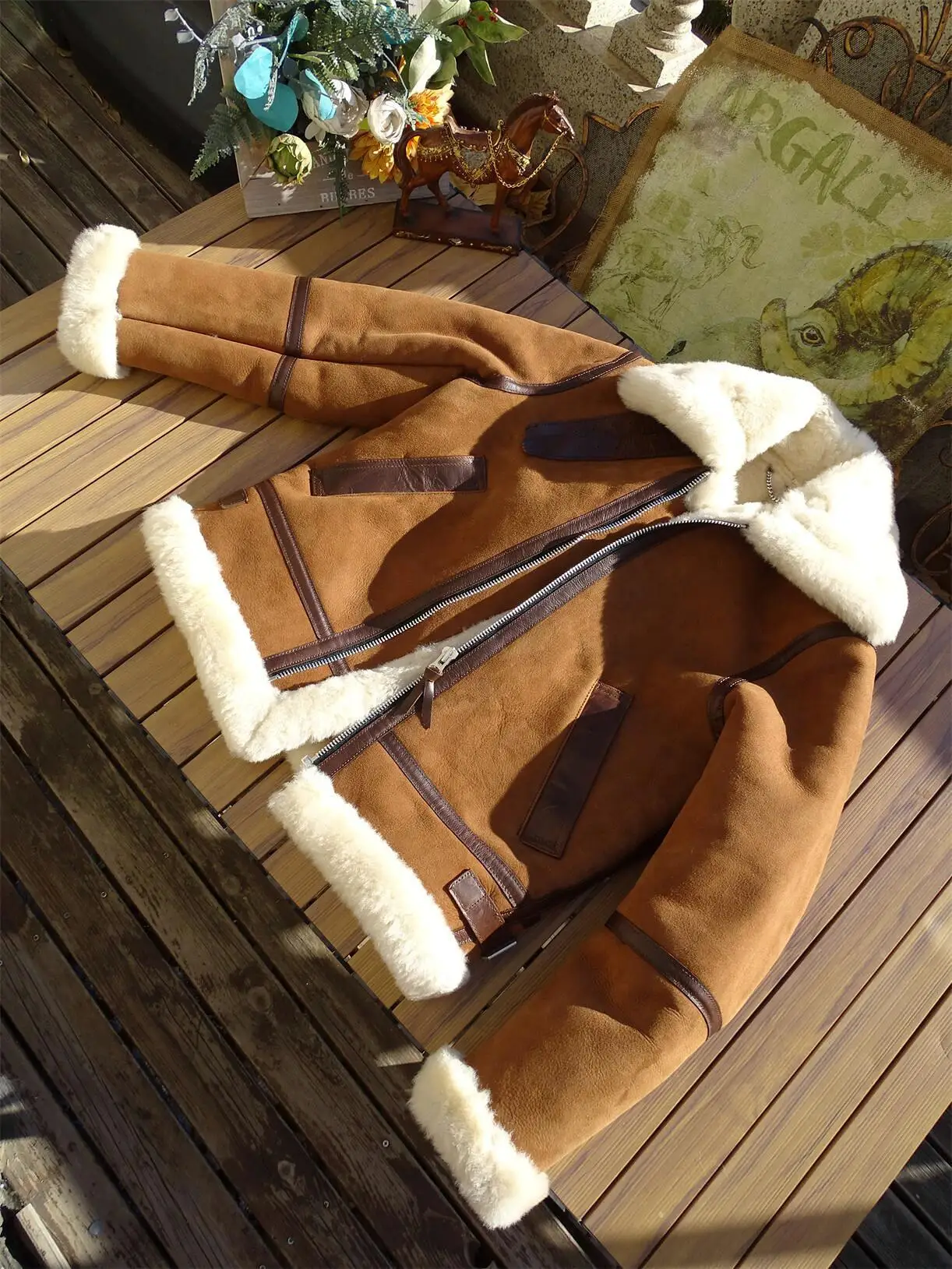
Seam Sealing
Heat often escapes through stitching, making seam construction important:
- Taped Seams: Special tape covers stitching to prevent water and wind penetration.
- Welded Seams: Advanced technique that bonds materials without stitching, eliminating potential cold spots.
Draft Prevention
Strategic features that block cold air infiltration make a substantial difference:
- Storm Flaps: Extra fabric layers that cover zippers and button closures.
- Adjustable Cuffs: Prevent cold air from entering through sleeves.
- Drawcord Hems/Waists: Allow cinching to create a seal against drafts.
- Inner Collars/Draft Tubes: Create additional barriers against cold air.
Understanding these construction elements explains why two coats with identical insulation can perform very differently. For optimal protection in winter conditions, selecting the perfect winter coat length ensures your core stays warm while allowing necessary mobility for your activities.
External and Personal Factors Influencing Perceived Warmth
Even the warmest coat will feel differently based on various external conditions and personal factors. Understanding these variables helps you make better choices about when and how to wear your winter outerwear.
Activity Level
Your body generates heat through movement, significantly affecting how warm you’ll feel:
- Stationary Activities: Standing at a bus stop or watching outdoor sports requires more insulation since your body produces minimal heat.
- Moderate Activity: Walking or casual shopping generates some body heat, requiring less insulation than stationary activities.
- High-Output Activities: Shoveling snow or winter hiking produces substantial body heat, potentially causing overheating in too warm a coat.
The same coat that feels perfect for a casual city stroll might feel stifling during a brisk walk and inadequate when standing still for extended periods.
Layering System
A proper layering strategy works with your coat to maximize warmth:
- Base Layer: Moisture-wicking fabrics keep sweat away from your skin, preventing the chilling effect of dampness.
- Mid Layer: Insulating materials like fleece or wool trap warm air close to your body.
- Outer Layer: Your coat serves as the weather-protective shell, blocking wind and precipitation.
Effective layering can make a moderately insulated coat perform like a much warmer one by creating multiple heat-trapping air spaces.
Weather Conditions
Environmental factors dramatically impact perceived temperature:
- Wind: Even a 10 mph breeze can make 30°F feel like 21°F due to wind chill.
- Humidity: High humidity in cold weather accelerates heat loss from the body.
- Precipitation: Rain or snow can compromise insulation performance, especially for down.
Personal Physiology
Individual differences mean that temperature comfort varies widely:
- Metabolic Rate: Some people naturally generate more body heat than others.
- Body Composition: Different body types retain heat differently.
- Gender Differences: Women typically feel colder than men in the same conditions due to physiological differences.
- Health Factors: Circulation issues, certain medications, and health conditions can affect temperature sensitivity.
For more detailed information about specific temperature ranges and appropriate outerwear, examining winter jacket temperature ratings provides valuable context for matching your coat to expected conditions.
Decoding Manufacturer Warmth Claims
Navigating manufacturer warmth claims requires understanding the difference between standardized metrics and marketing terminology. Each brand may use its own rating system, making direct comparisons challenging.
Brand-Specific Rating Systems
Many companies create proprietary warmth scales:
– Numeric scales (1-5, with 5 being warmest)
– Temperature range recommendations (-20°F to 30°F)
– Activity-based ratings (Light Activity, Moderate Activity, High Activity)
– Descriptive categories (Extreme, Very Cold, Cold, Mild)
These systems are helpful for comparing coats within a single brand but may not translate accurately between different manufacturers.
Marketing Terms vs. Technical Specifications
Learn to distinguish between marketing language and measurable specifications:
Marketing Terms:
– “Arctic-ready” (subjective, undefined standard)
– “Extreme warmth” (relative to what?)
– “Revolutionary heat technology” (vague, unquantified claim)
Technical Specifications:
– “800 fill power goose down, 6 oz fill weight”
– “200g/m² synthetic insulation”
– “Windproof to 60 mph, water-resistant shell”
The technical specifications provide concrete information about what makes the coat warm, while marketing terms offer little comparable data.
Potential Misleading Claims
Be wary of these common exaggerations:
- Meaningless Comparisons: “Twice as warm!” (compared to what?)
- Implication of Testing: “Lab-proven warmth” (without specifying the testing methodology)
- Weight-Warmth Confusion: Heavy coats aren’t necessarily warmer; effective insulation is about trapped air, not weight.
When evaluating coats, focus on specific insulation metrics and construction features rather than broad warmth claims. For practical options with reliable warmth ratings, you might explore our collection of winter coats for men featuring various insulation technologies and temperature ratings.
Choosing the Right Coat for Your Climate and Activities
Selecting the ideal coat requires matching its capabilities to your specific needs. Consider these key factors to find the perfect balance of warmth, functionality, and comfort.
Assess Your Personal Requirements
Start by honestly evaluating your situation:
- Local Climate: What’s the typical winter temperature range in your area?
- Coldest Temperatures: What are the extreme cold snaps you might encounter?
- Precipitation Type: Do you deal with dry cold, wet snow, or freezing rain?
- Activity Profile: Are you primarily commuting, standing outdoors, or actively engaging in winter sports?
- Cold Sensitivity: Do you tend to feel colder or warmer than others in the same conditions?
Matching Insulation to Use Cases
Different scenarios call for different insulation strategies:
Urban Commuting:
– Moderate insulation (550-650 fill down or 100-150g synthetic)
– Features for quick on/off (two-way zippers, magnetic closures)
– Emphasis on style alongside function
– Consider coats that work with business attire
Outdoor Recreation:
– Layer-friendly design to adjust to changing exertion levels
– Moisture management features to handle sweat
– Articulated design for freedom of movement
– Potentially lighter insulation if high activity is expected
Extreme Cold Protection:
– Maximum insulation (700+ fill down or 200g+ synthetic)
– Extended coverage (longer length, hood, face protection)
– Enhanced draft protection at all openings
– Possibly double-layer construction
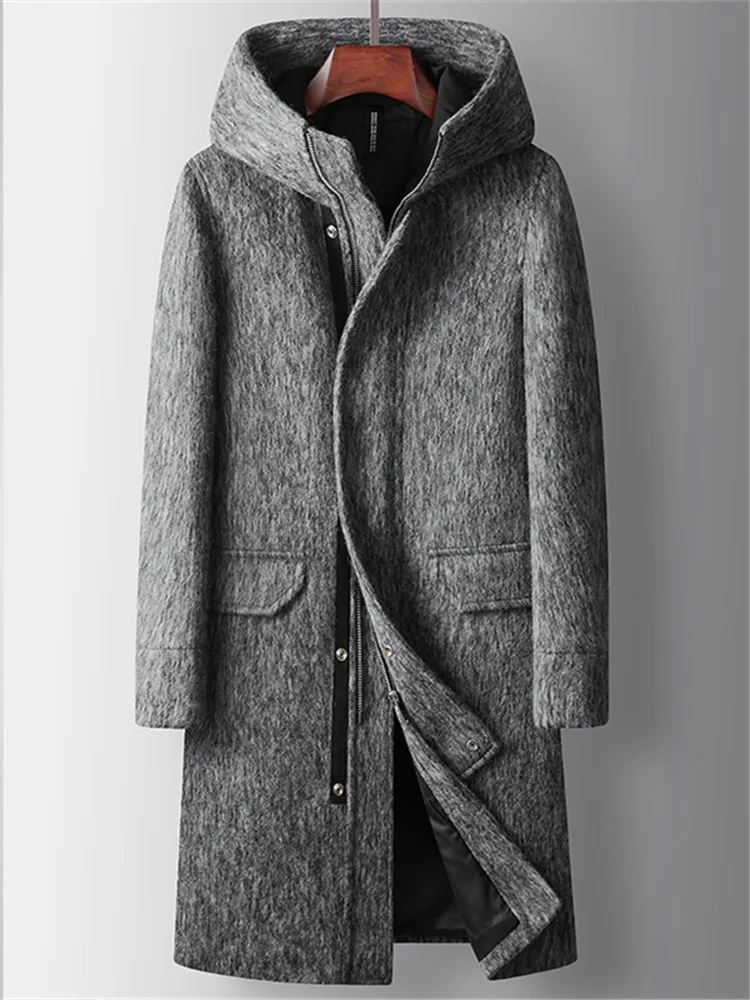
Balancing Competing Priorities
Consider these trade-offs when making your selection:
- Warmth vs. Weight: Higher warmth typically means heavier coats, though premium insulations can minimize this difference.
- Weather Protection vs. Breathability: More waterproofing generally means less breathability.
- Versatility vs. Specialized Performance: All-purpose coats may not excel in extreme conditions.
- Cost vs. Features: Determine which premium features justify additional investment for your specific needs.
For those facing particularly harsh winters, exploring our heavy winter coat collection offers options specifically designed for extreme temperature protection.
Mens Heavy Winter Coat, Mens Insulated Coat, Mens Parka Coat
Price range: $175.52 through $237.36 Select options This product has multiple variants. The options may be chosen on the product pageMens Big and Tall Winter Coats, Mens Down Coat, Mens Hooded Winter Coat, Mens Puffer Coat
Price range: $126.44 through $217.01 Select options This product has multiple variants. The options may be chosen on the product pageMens Big and Tall Winter Coats, Mens Hooded Winter Coat
Price range: $80.32 through $106.68 Select options This product has multiple variants. The options may be chosen on the product pageMens Cashmere Overcoat, Mens Hooded Winter Coat, Mens Wool Blend Coat
Price range: $128.72 through $139.68 Select options This product has multiple variants. The options may be chosen on the product pageMens Hooded Winter Coat, Mens Insulated Coat, Mens Puffer Coat, Mens Quilted Coat
Price range: $139.88 through $177.72 Select options This product has multiple variants. The options may be chosen on the product pageMens Double Breasted Pea Coat, Mens Hooded Winter Coat, Mens Quilted Coat
Price range: $81.00 through $108.48 Select options This product has multiple variants. The options may be chosen on the product page
Common Questions About Coat Warmth Ratings
Is down always warmer than synthetic insulation?
Not necessarily. High-quality down (800+ fill power) offers better warmth-to-weight ratio than synthetic, but synthetic insulation performs better when wet. A high-quality synthetic coat may provide more reliable warmth than a lower-quality down coat in damp conditions. The total amount of insulation also matters—6oz of 600-fill down may provide similar warmth to 4oz of 800-fill down.
Do heavier coats always provide more warmth?
Weight alone doesn’t determine warmth. A heavy wool peacoat might weigh more than a technical down parka but provide less insulation. Warmth comes primarily from trapped air, not material weight. Premium insulations achieve exceptional warmth with minimal weight.
What exactly is “wind chill factor”?
Wind chill factor measures how much colder it feels due to wind removing the warm air layer next to your skin. For example, 20°F with 20mph wind feels like 4°F to exposed skin. Wind-resistant shell fabrics on coats minimize this effect by preventing wind from penetrating to your body.
Which features are most important for extreme cold?
For temperatures below 0°F, prioritize:
– High fill power down (800+) or heavy synthetic insulation (200g+)
– Wind-proof (not just wind-resistant) outer shell
– Extended coverage including insulated hood
– Draft prevention at all openings (wrists, neck, waist)
– Box baffle construction to eliminate cold spots
– Face protection features like tall collars or integrated scarves
What are the best insulation options for wet conditions?
For consistently wet environments:
– Synthetic insulation maintains warmth when damp
– Hydrophobic down (treated to repel water) offers a middle ground
– Waterproof (not just water-resistant) shell fabric
– Sealed or taped seams to prevent water infiltration
– Quick-drying liner materials
For guidance on choosing between different coat styles based on function, our article comparing short versus long coats provides practical advice for matching length to your protection needs.
Maintaining Your Coat’s Warmth Performance
The warmth of your winter coat isn’t just about its initial specifications—proper care dramatically affects its long-term insulating performance. Following these maintenance practices ensures your coat will continue providing optimal warmth year after year.
Down Insulation Care
Down requires special attention to maintain its exceptional loft:
– Clean according to manufacturer instructions, typically using specialized down wash
– Avoid standard detergents which strip natural oils from down clusters
– Dry thoroughly on low heat with clean tennis balls to restore loft
– Never compress down for storage during off-seasons
– Store hanging or loosely packed in breathable bags
Synthetic Insulation Care
Synthetic insulation is generally easier to maintain:
– Follow garment care labels for washing instructions
– Most synthetics can handle standard gentle detergents
– Avoid fabric softeners which coat fibers and reduce insulation effectiveness
– Dry on low heat, checking frequently to prevent damage
– Can be compressed for short periods without permanent damage
Signs of Declining Insulation Performance
Watch for these indicators that your coat is losing its warming ability:
– Visible flattening or compression that doesn’t recover after shaking
– Cold spots developing where insulation has shifted
– Increased chill penetration in previously warm areas
– Down clusters clumping together rather than distributing evenly
– Synthetic insulation forming hard packed areas
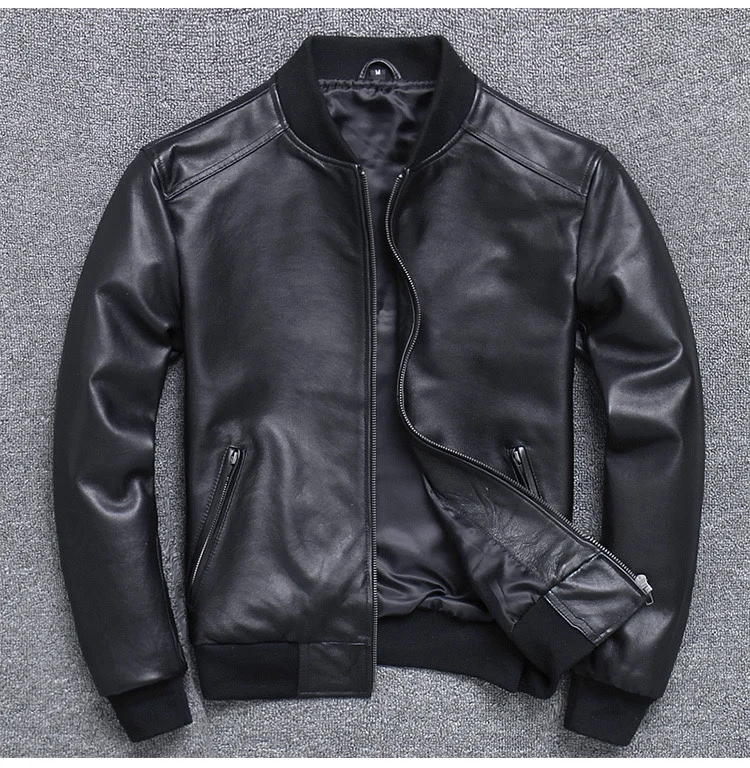
Revitalizing Insulation
Before replacing a coat, try these restoration techniques:
– For down: Complete washing and drying cycle with tennis balls to refluff
– For synthetic: Multiple dryer cycles on low heat with clean tennis balls
– Professional cleaning services specializing in technical outerwear
– Repair any shell tears immediately to prevent insulation loss
With proper care, premium insulated coats can maintain their warmth ratings for many seasons. For those seeking exceptional durability alongside superior warmth, our collection of premium shearling coats offers natural insulation that maintains performance characteristics with minimal maintenance.
At Metro Cloak, we believe in providing outerwear that maintains its performance throughout years of wear, combining technical excellence with timeless design. Understanding the science behind coat warmth ratings empowers you to make informed decisions and properly maintain your investment pieces for optimal cold-weather protection.

